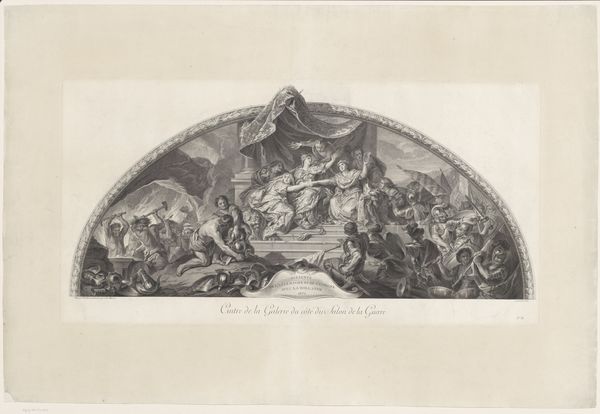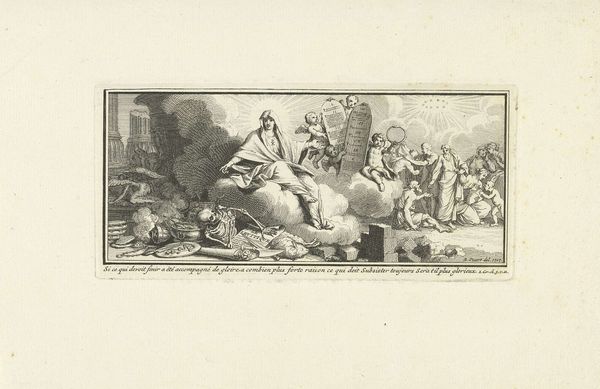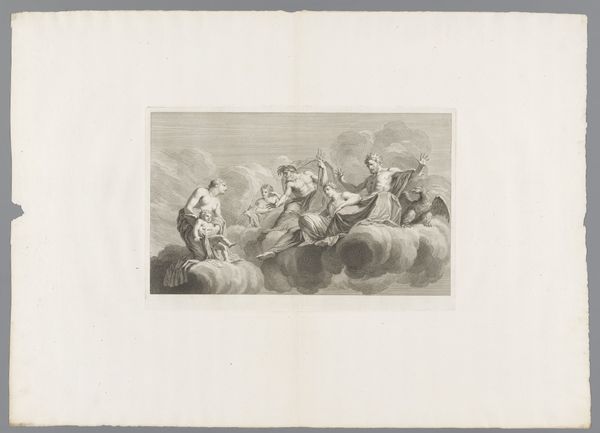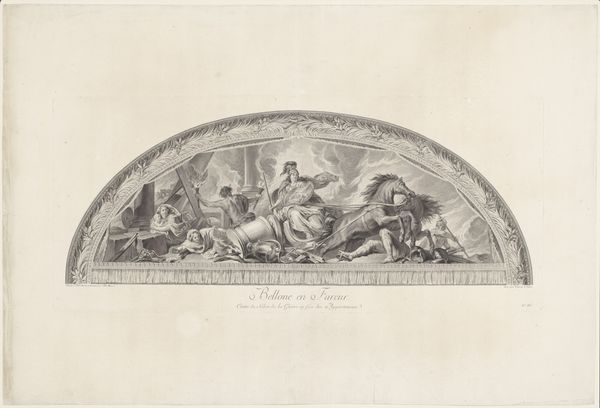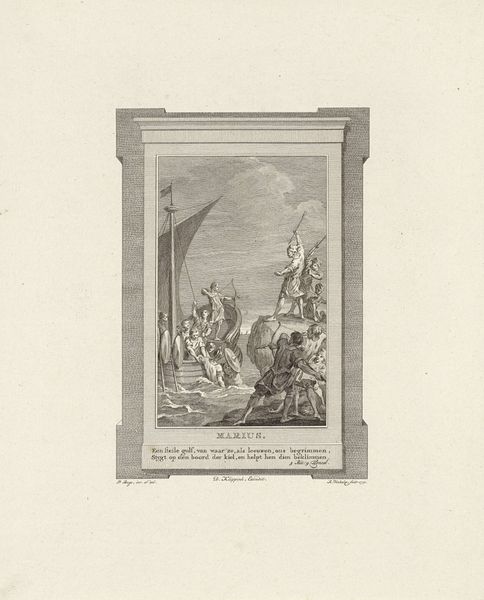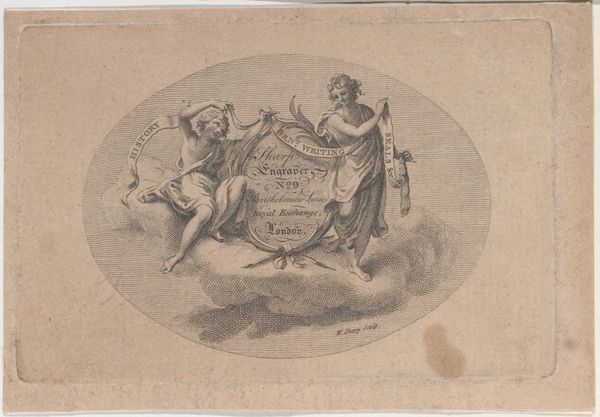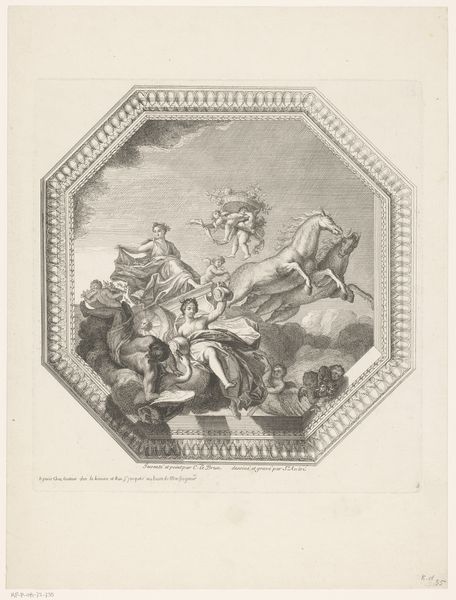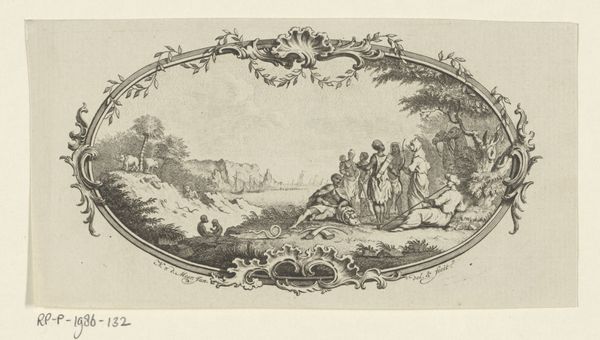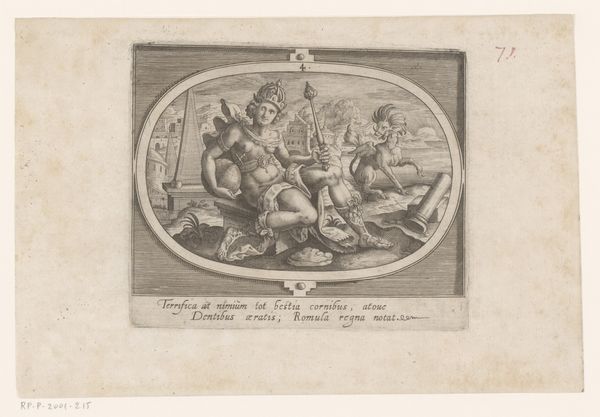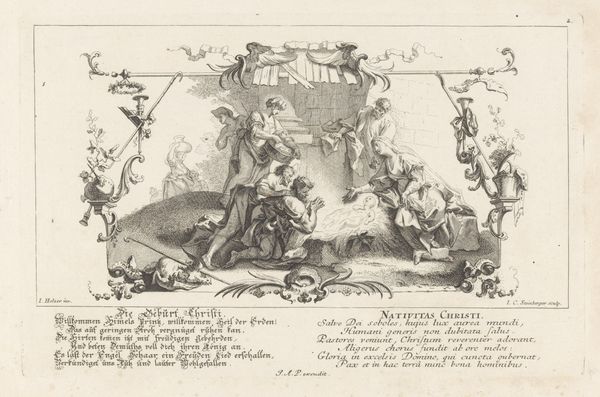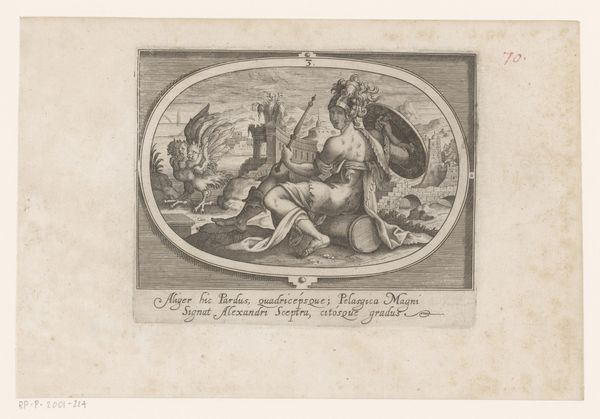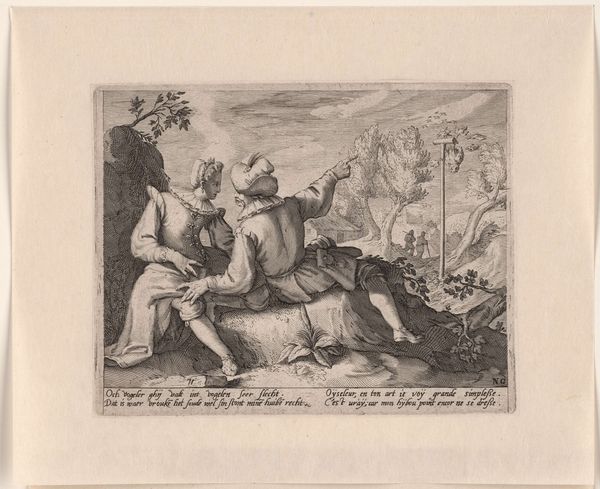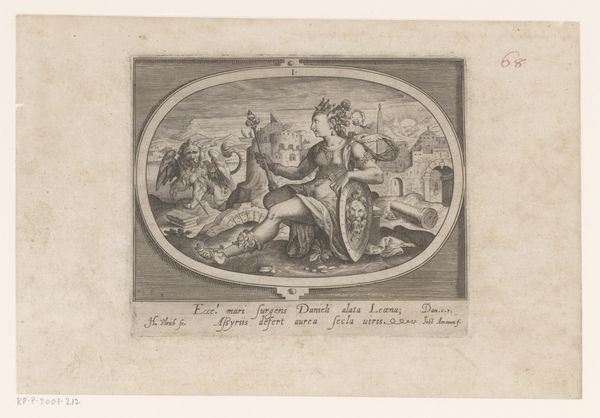
The Wife of Ceteus burnt on the Pile of her Husband 1790 - 1800
0:00
0:00
drawing, print, pencil, engraving
#
pencil drawn
#
drawing
#
narrative-art
# print
#
death
#
pencil sketch
#
figuration
#
romanticism
#
pencil
#
line
#
history-painting
#
engraving
Dimensions: Sheet: 3 1/8 × 4 1/2 in. (7.9 × 11.4 cm)
Copyright: Public Domain
Curator: This drawing, titled "The Wife of Ceteus burnt on the Pile of her Husband," was created by Edward Francis Burney sometime between 1790 and 1800. The artist employed pencil and engraving to depict this striking narrative scene. Editor: It has a stark, unsettling quality, doesn't it? The figures are outlined with such precision, almost clinical, which contrasts sharply with the intense emotion the scene implies. Curator: Indeed. The image engages with a complex and troubling practice: the historical phenomenon of Sati, where widows immolated themselves on their husband's funeral pyres. We have to address that this act wasn't always a free choice. Editor: You're right; it speaks to the power of societal expectation, almost a cultural script, especially when observing how the characters enacting this event wear nearly the same grief stricken expressions on their faces. Curator: Absolutely. The active roles of figures stoking the flames must be analyzed: they appear indifferent and driven by a certain ideology rather than compassion or hesitation. The artist uses light and shadow to underscore this imbalance of power. Editor: Symbolically, the flame acts as both a destructive and transformative force, right? The wife willingly throws herself in or is placed upon the funeral pyre; the burning signifies purification, transcendence... and perhaps forced submission. Is there a subtle judgement of that on display? Curator: Possibly. By focusing on the wife, Burney compels us to confront questions of gendered expectations, sacrifice, and societal pressures. What does it mean for a woman to embrace this fate? Was she actually given the opportunity to express desire? These queries about agency trouble me most. Editor: It also calls to mind classical mythology, of course – think of Dido and Aeneas. Fire carries connotations of purification and divine communication across many eras and regions; it's interesting how that's intertwined with very human power dynamics here. Curator: Precisely! The drawing's presence in the Metropolitan Museum invites viewers to consider the intersections of history, gender, and power. These subjects will help to explore not just this work but others like it. Editor: A potent visual reminder of the heavy weight of historical precedent – one that demands ongoing interrogation. Thank you!
Comments
No comments
Be the first to comment and join the conversation on the ultimate creative platform.

